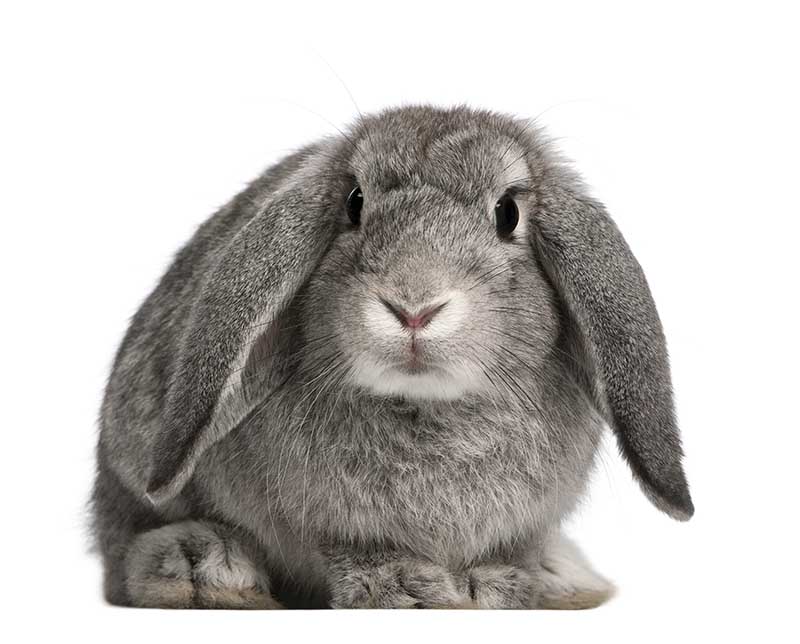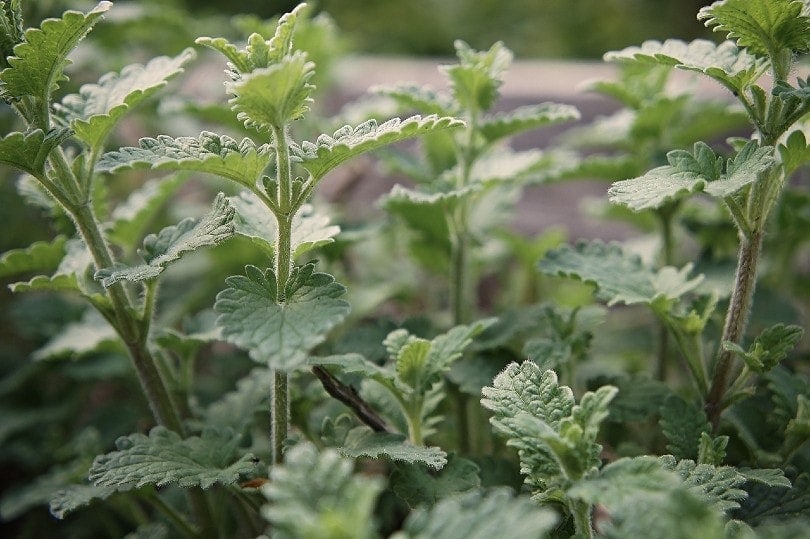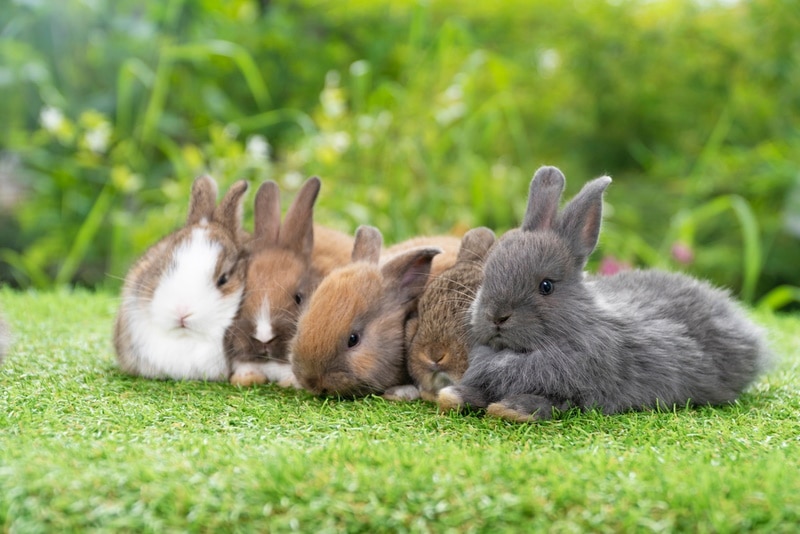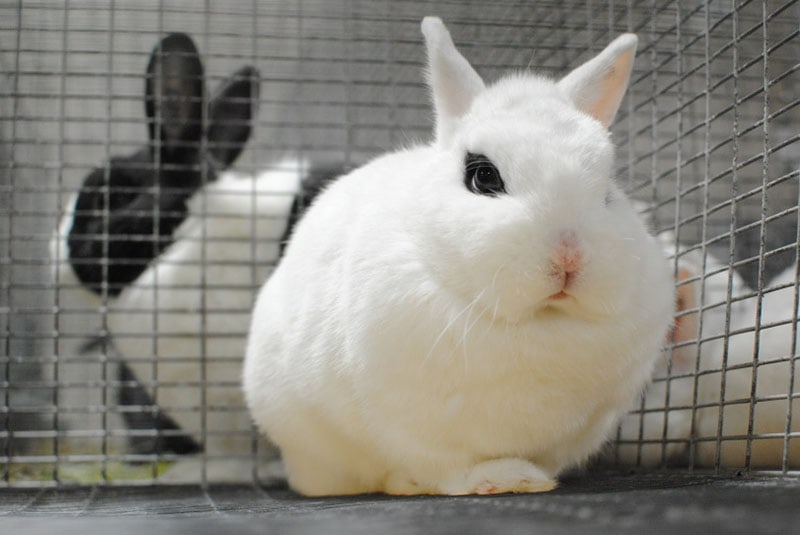Velveteen Lop Rabbit: Pictures, Care Guide, Lifespan & Traits
Updated on

When a rabbit has been given the name “velveteen,” you just know that they will be as soft as velvet. That’s exactly the case with the Velveteen Lop, which was named after the children’s book, “The Velveteen Rabbit” by Margery Williams.
These gorgeous rabbits are popular among Lop enthusiasts for their oversized floppy ears and small size. Here’s more information about these rabbits so you can have a clear picture of what it’s like to own the Velveteen Lop.
| Size: | Medium |
| Weight: | 5–7 lbs. |
| Lifespan: | 5–11 years |
| Similar Breeds: | English Lop, Holland Lop, Mini Rex, Mini Lop |
| Suitable for: | First-time and experienced rabbit owners |
| Temperament: | Sweet, friendly, affectionate, smart, playful |
These velvety rabbits were bred by Virginia Mendsen during the 1980s, who was aiming for lop rabbits weighing about 4.5 pounds. She bred the English Lop with the Mini Rex, which gave us the Velveteen Lop rabbit.
That makes this breed fairly new, but they have grown in popularity due to their sweet and playful disposition, long ears, and gorgeous fur! They come in a wide variety of patterns and colors that closely follow those of the English Lop.
Velveteen Lop Rabbit Characteristics
How Much Do These Rabbits Cost?
The Velveteen Lop is not as well-known as some other rabbit breeds, so it might be tricky to find one. If you do, you will likely pay somewhere between $50 and $100. Try doing online searches and posting messages through social media about your interest in this breed. Someone might point you in the right direction.
How much you pay will ultimately depend on the pedigree. Low-priced Lops might have a questionable background, and high-priced ones might have come from parents used for shows and exhibitions
Temperament & Intelligence of the Velveteen Lop
Velveteen Lops make excellent first pets, especially if you want a different kind of pet instead of the usual cat or dog. They are considered smart and easygoing and tend to be quite calm, which is saying something for a rabbit! Velveteens are also quite playful and docile; they love getting attention and can be affectionate.
Do These Rabbits Make Good Pets? 👪
They make great pets! They are gentle, soft, and playful, so children will love petting these rabbits. Their care needs are in line with those of any other rabbit.
Rabbits don’t tend to bite unless they are essentially backed into a corner. Velveteen Lops can do quite well in a home with children or single and older people.
Does This Rabbit Get Along With Other Pets?
They get along with other rabbits, but as prey animals, Velveteens being around predators like cats and dogs might cause them a tremendous amount of stress. That said, you’ve likely seen videos of a cat or dog snuggling up to a contented rabbit.
Much of that comes down to how well-socialized your pets are, including your rabbit. If they grow up with a gentle dog or cat, they might get along just fine. Still, you should always supervise all interactions.
Things to Know When Owning a Velveteen Lop
Here, we cover the requirements of owning the Velveteen Lop rabbit
Food & Diet Requirements 🥕
Your rabbit needs a diet that consists primarily of hay. Their diet generally breaks down to 80% hay, 10% vegetables, 5% rabbit pellets, and 5% treats, along with constant access to clean, fresh water.
Most rabbit owners opt for timothy hay, which should be left out and available to your rabbit at all times. It can be helpful to place water and hay in several places around your home.
Ensure that you feed dark, leafy greens to your Velveteen, and only give them treats like fruits and vegetables sparingly. Also, be sure you’re familiar with the plants toxic to rabbits.
Habitat & Hutch Requirements 🏠
Your Velveteen Lop should have an enclosure that measures roughly 3’ x 3’. It must be large enough for your rabbit to move around easily. You can find rabbit enclosures in pet stores or make one yourself. Many rabbit owners also use large dog crates, playpens, and exercise pens.
Substrate for the hutch should be timothy hay, aspen, or recycled paper, but most rabbits prefer to sleep on hard surfaces. You can try a rug made with natural material or soft mats like towels or a bathmat.
Then there’s the litter box. Rabbits like to do their eating and pooping at the same time, so you’ll need something big enough for both “activities.” Aim for a 22” L x 17” W x 6.5” H litter box, and use paper-based pelleted litter. You can use a cat litter box or a plastic storage bin. One end should contain timothy hay, so your rabbit can eat and do their business.
Exercise & Sleeping Needs 🐇
Exercise is essential for rabbits, and besides staying in their enclosure, they should have the freedom to roam around rabbit-proofed parts of your house. They should also have access to sunshine and fresh air, but they don’t do as well as outside rabbits. Their large ears and small size make them particularly susceptible to the cold and frostbite.
But supervised time in an enclosed area outside on warm days would benefit your rabbit, giving them the space to run and the opportunity to forage for food.
Rabbits need to sleep about 8 hours a day and might sleep more than this, but they don’t sleep all night like us. Lops are crepuscular, which means they are active at dawn and dusk and get most of their sleep in the middle of the night and from late morning to early evening.
Training 🥎
Training the Velveteen Lop is doable because they are quite smart. You can train them to walk on a leash and come when called. Probably the most important training, though, is for using the litter box, which many rabbit owners accomplish quite successfully. The use of positive reinforcement and treats can work well for the Velveteen Lop.
Grooming ✂️
The Velveteen Lop has short fur, but it’s quite plush and dense and would benefit from daily brushing, which helps remove any excess hair and dirt. You don’t usually have to worry about bathing your Lop because rabbits clean themselves quite meticulously. If a bath is necessary because of excess dirt, never submerge your rabbit in water. You’ll simply want to spot-clean any areas that need attention.
You also need to ensure that your rabbit is eating enough fibrous material, like timothy hay, to prevent overgrown teeth. They’ll need their nails trimmed every 1 to 2 months. Finally, those large, glorious ears will need cleaning about once a month.
Lifespan and Health Conditions 🏥
The average lifespan of domestic rabbits is 8 to 12 years, and the Velveteen Lop falls right in that range at 5 to 11 years.
But all rabbits might encounter certain health problems. Common ones include:
- Dental disease (if left untreated, it can become serious)
- Ear mites
- Pasteurellosis(also known as the snuffles)
- Gastrointestinal stasis
- Uterine cancer
- Head tilt
Male vs. Female
The main difference between male and female Velveteen Lops is size. The males tend to be heavier and larger than the females. Male Lops also tend to be somewhat more laidback than female Lops, but if you have both a male and female, he will be protective of her.
Females tend to be more territorial and try to be in charge more often. Neutering and spaying will help prevent destructive behaviors and many mating behaviors.
3 Little-Known Facts About the Velveteen Lop Rabbit
1. The Velveteen Lop’s history is short and complicated
The history of the Velveteen Lop is not a straightforward one. During the 1980s in California, Virginia Menden was interested in putting the coat of the Rex on a curved, or “mandolin” shaped, body. She used the Mini Rex and English Lop but gave up in 1994.
Paul Lewis of New Mexico gave it a whirl, followed by Mary Crawford of Texas, who had a successful showing but failed in subsequent showings. Yet another breeder, David Kabela from Texas, was able to produce consistent showings. Mary Crawford took over again, followed by Lorrie Stillo of Ohio, and so on.
2. The Velveteen Lop cannot compete for Best of Breed or Best in Show
It took a while to have the Velveteen formally recognized by the American Rabbit Breeders Association. In fact, they were recognized as recently as December 1, 2022. They are in the working standard but are not allowed to compete for Best of Breed or Best in Show.
3. The Velveteen Lop’s temperament comes from their parent breeds
Both English Lops and Mini Rexes are known to be friendly, gentle, and mild-mannered breeds. This explains where the Velveteen got their best qualities, including that lush Rex coat.
Final Thoughts
It seems like a multitude of breeders is working toward the best version of the Velveteen Lop, which can only help bring this newer breed into the light and possibly into more people’s homes.
These rabbits have the softest and plushest coats and gentle and easygoing temperaments. If you can find a Velveteen Lop, you’re in for a lovely, charming companion.
Featured Image Credit to: Eric Isselee, Shutterstock











